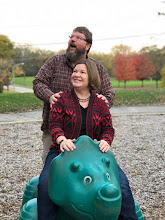Friday, May 19, 2006
My latest published story - dandelions
http://www.dailysouthtown.com/southtown/dsliving/191ldcov.htm
In defense of the dandelion
Mighty weed is more than a lawn wrecker
Friday, May 19, 2006  Some dandelion facts
Some dandelion facts
By Paul Eisenberg
Correspondent
"There's like a million dandelions in my postage stamp yard," he said. "Right after I mow, they spring up, so I have a nicely mowed lawn with all these dandelion stalks sticking up a half foot above it."
Last summer, Moeller decided to eradicate the problem. He spread some commercial dandelion killer, and, for the remainder of the summer, his yard was free of the yellow-flowered weeds.
But this spring, exemplifying the prolific propagation tendencies of the plant, the dandelions "came back with a vengeance." And so Moeller once again will break out the spreader to sow dandelion-killing pellets.
"It only takes me 20 minutes to do a couple runs over my lawn with the spreader," he said. "It's more of a pain looking at (dandelion stalks) than doing something about it.
"If they stayed yellow, it wouldn't be as bad. But still, they choke out my grass. They grow way too fast."
Of course, because many of his neighbors do nothing to stop dandelions from growing in their yards, the plant's drifting seeds will keep settling in his yard, resulting in a new crop of weeds next year. That, in turn, will cause Moeller to spread more dandelion killer.
Deb Krohn, a naturalist at Plum Creek Nature Center south of Crete, is not a fan of that annual weed-killing cycle, but she can understand why it occurs.
"As a naturalist, (dandelions) are wonderful," she said. "But if you talk to my husband, they're the most hellish plants in the yard."
Krohn's husband's view is shared by most green lawn aficionados. But the dandelion wasn't always viewed in a negative light. In fact, the plant was seen as essential to early European colonists, who brought dandelions over from the Old World for use in food and drink.
"You can eat every part of the dandelion," Krohn said. "There are many recipes. You can make wine from the flowers, use the leaves in salads, and some people even take the flowering heads, batter them and deep fat fry them."
The root of the plant can be brewed into a coffee substitute, and the flower can even be distilled into schnapps.
Although the early colonists may not have known it, the leaves are more nutritious than most greens used commonly in salads. They contain copious amounts of vitamins A and C.
"The leaves can be bitter," Krohn said, "but they're so healthy for you. Plus, anything (tastes better) dipped in ranch dressing. Better yet, you can fat fry the flowers and then dip them in ranch dressing."
And though American naturalists generally take a dim view of most non-garden plants brought over from Eurasia, even the most native plant centric people can give the dandelion grudging credit for its usefulness to wildlife.
In areas such as the Southland, where most land long ago was gobbled up for development, the dandelion has become a valuable food source for songbirds such as the goldfinch and house sparrow, which eat the seeds. Squirrels and groundhogs dine on the leaves and seeds of the dandelion. Krohn has spotted even native box turtles munching on the prolific plants.
Krohn, who keeps several reptiles as pets, also values the dandelion as a food source for her cold-blooded friends.
"It's one of the most nutritious foods you can feed a turtle," she said. "Some lizards will race across the room if they see a dandelion flower.
"Plus, it's free. You can go right out and pick some. And it's better for the lizards than leaf lettuce you have to buy at the store. If you're a reptile fan, (dandelions) are awesome."
Insects also benefit from dandelions, especially the honey bee, itself a European native that probably has depended on the weed for its pollen for thousands of years.
"I've seen so many insects on dandelion flowers, honey bees, ants, bumble bees and even butterflies," Krohn said.
And though the plants may not be conducive to a uniform lawn, Krohn said, the dandelion has aesthetic value as well.
"It's the first flower every mom gets from her child," she said. "There's not a mom out there who hasn't received a bouquet of dandelions.
She said children who come to Plum Creek Nature Center invariably end up playing with dandelions and, as a result, help the plants spread their seeds.
Because of the dandelion's useful qualities combined with its prolific reproduction, Krohn said she hopes more people will stop spreading poison to kill the plants and enjoy them instead.
"After all," she said, "we're the ones who brought them here. We might as well use them for what we brought them for."
But then again, because the plant can be found just about anywhere, people such as Moeller don't have to let them grow in their yards in order to enjoy the benefits.
"Sure, they're good in a salad," Moeller said. "And I may even collect and use them. But I'm not going to grow them in my yard. I can find them anywhere."
